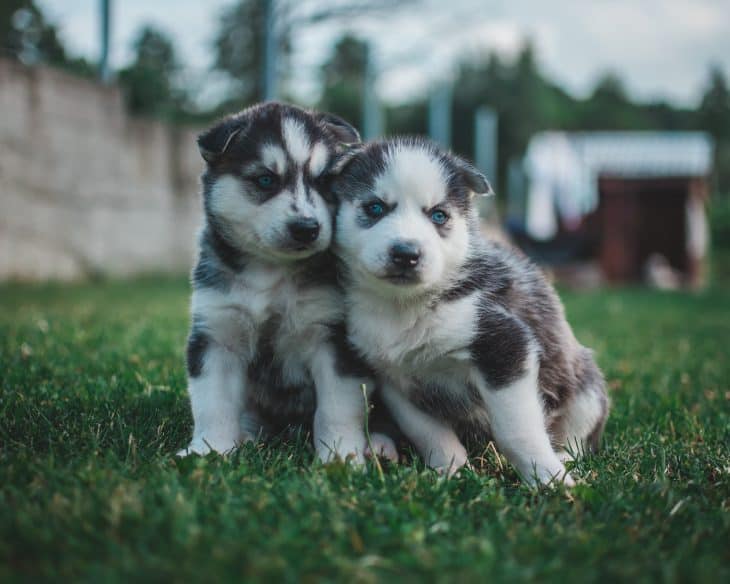
Maybe it’s their charming looks. Maybe it’s their resemblance to creatures in pop culture. Whatever the reason is, the Siberian Husky is one of the most well-known dog breeds in the world. These Siberian Husky facts will help you understand these gentle yet clever animal.
- The husky was originally bred by the Chukchi people of northeast Siberia.
- The Siberian Husky has a double coat of fur.
- They have a high prey drive because the Chukchi lets them roam free in the summers.
- Husky type dogs were originally landrace breeds kept by Arctic indigenous people.
- They are independent thinkers.
- The word husky originated from the word Eskimo, the aboriginal Arctic people known as ‘Eskies‘.
- They are one of the oldest dog breeds.
- The English sailors of trading vessels pronounced the dog’s name as ‘Eskies’.
- It is genetically close to the gray wolf.
- The average weight of a husky is 35-60 pounds.
- They stand between 20-23½ inches.
- Siberian huskies can live up to 12-14 years.
- Siberian Huskies are highly intelligent.
- Their coat sheds heavily twice a year, or as needed in the climate.
- They can withstand temperatures as low as -60° Fahrenheit.
- They rarely bark. Huskies mainly communicate through howling and whining.
- Siberian Huskies are very friendly with strangers.
- Huskies can bark due to stress, anxiety, or loneliness.
- They are naturally clean with little odor.
- Hygiene-wise, they are pretty low-maintenance. They only need a few baths a year (depending on the climate) and weekly brushing.
The Chukchi believed Huskies were living spirits of the dead.
Because of this belief, they shared their food and tents with them even in times of famine. Definitely one of the more heartwarming Siberian husky facts.
They are the fastest sled dogs.
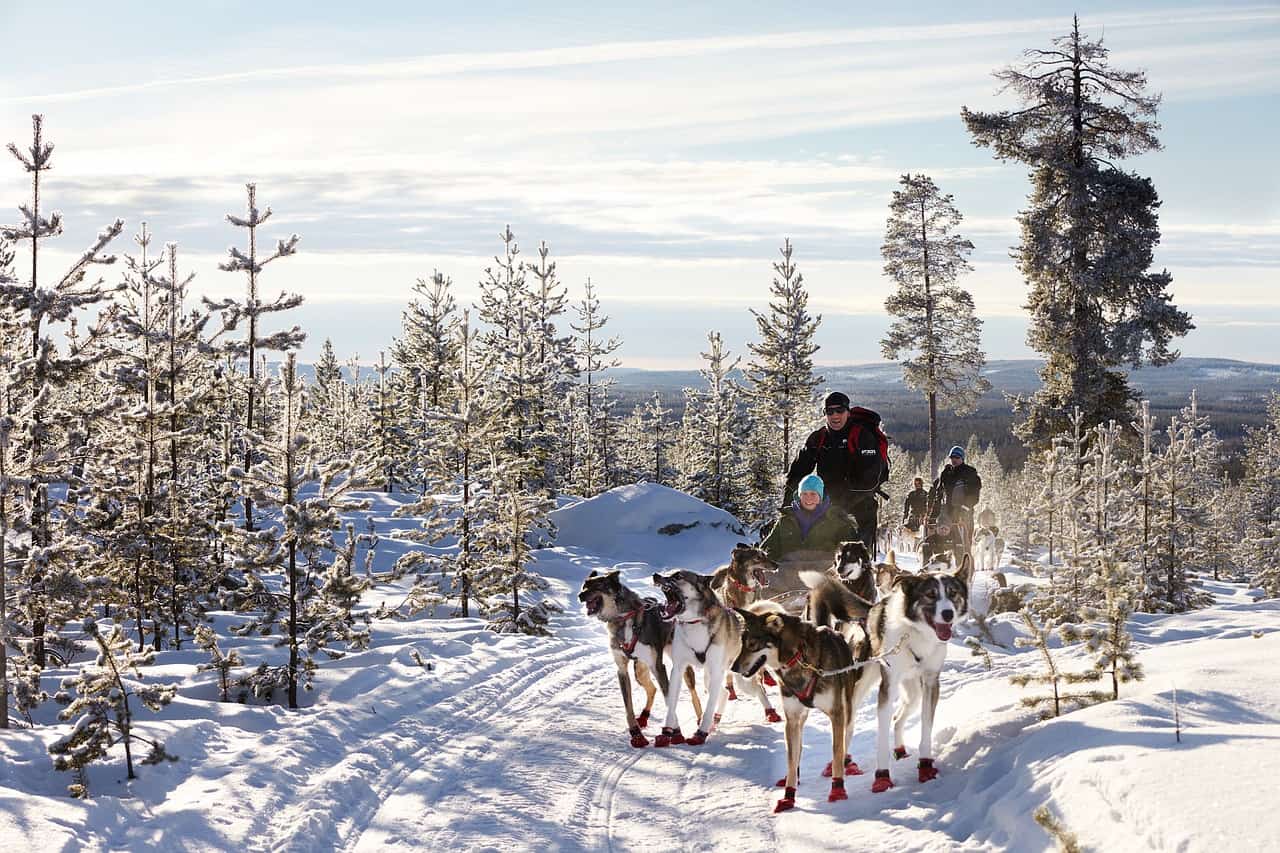
At a time where people use bigger dogs for sled races, huskies proved to be the fastest breed in 1909 and were since touted as the sled dog of choice.
Because Eskimos raised them to roam free, Huskies are quite stubborn.
The Eskimos allowed the original sled dogs to roam around and hunt for themselves when they weren’t needed for any tasks. This is a trait that Siberian huskies carry up to present. They can be challenging to tame.
Huskies are famous for the “Siberian Swirl.”

The Siberian Swirl is a position Huskies commonly sleep in – curled up with their tails covering their noses. This behavior is for conserving warmth since they originated from the harsh cold of Siberia.
Huskies have cured an epidemic.
One of the most known feats of the Siberian Husky is the 1925 Serum Run to Nome, where 150 huskies ran 674 miles (1,085 km) in an extremely harsh blizzard to deliver the antitoxin for diphtheria.
It took 127.5 hours to reach the cure, but the medicine made it to the village.
With harsh weather conditions making it a no-flight situation, the sled dogs and mushers managed to deliver the cure to Nome, Alaska in 5½ days.
There’s a bronze statue of Balto the Husky in New York City’s Central Park.
Balto – led by Gunnar Kaasen – became famous as the dog who led the last leg of the Serum Run to Nome at 51 miles. However, it was actually Leonhard Sappala’s dog, Togo, who made the longest run for the journey, spanning 91 miles.
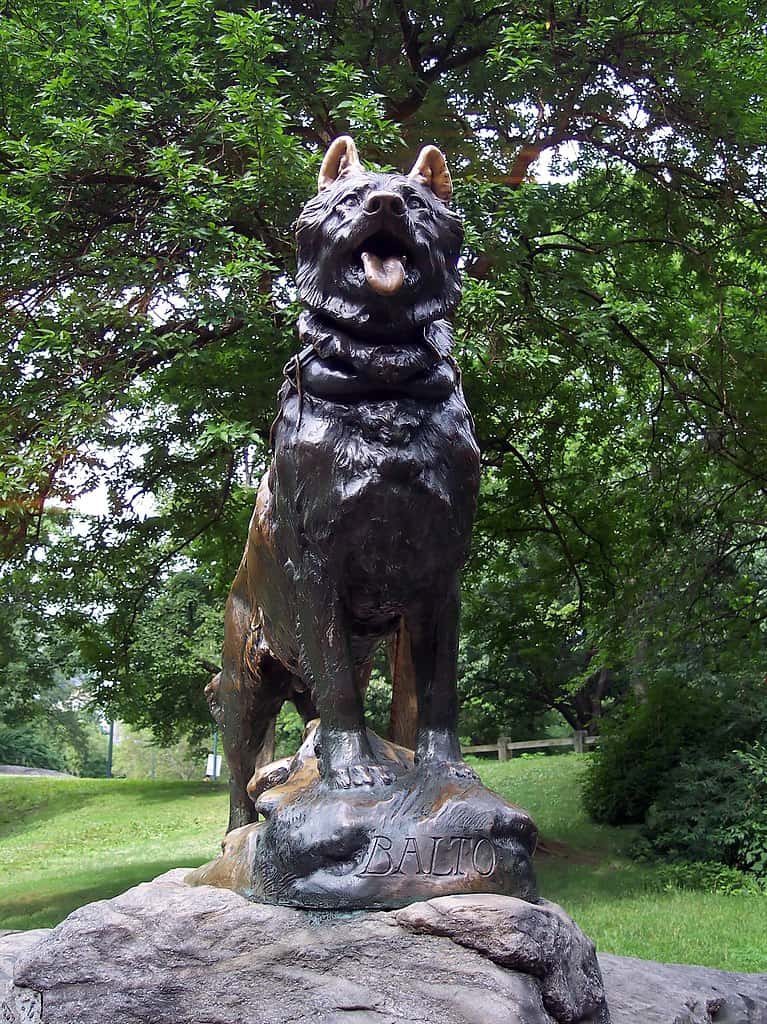
Huskies can regulate their metabolism.
Given their history as sled dogs, huskies preserve their energy by regulating their metabolism at will. They don’t burn up their glycogen and fat reserves as humans do. It is still unknown how they are capable of this.
They need lots of physical and mental stimulation - or else they’ll act out.
Siberian Huskies need 30 to 60 minutes of exercise daily to keep them from boredom. Huskies are like teenagers in this sense: they’d do stupid things or cause mischief when they’re bored.
They generally aren’t ideal for first-time dog owners.
The rule of thumb for dog breeds is that the smarter they are, the harder it is to raise them. Highly intelligent dogs are harder to train since they have their way of doing things and more likely to cause a ruckus. Huskies are not only smart, but their history as work dogs could make raising them a challenge.
They need space.
It doesn’t have to be a lot, but Huskies must have their own space to run around, like a small yard. This will help them release their seemingly infinite energy.
Game of Thrones’ direwolves caused an increase in demand for Siberian Huskies…
… and consequently, an increase of Huskies dropped off or abandoned at shelters for their challenging temperaments. The hype for huskies seemed to cause a surge in people who wanted them for their aesthetic without researching how to care for them.
A Husky makes a great exercise companion.
As long as the weather isn’t too warm, your husky would be a great fitness partner since they are dogs built for athleticism. However, make sure you don’t take your husky out when it’s too hot out – remember, these are Arctic dogs we’re talking about.
They have abandonment issues.
Huskies can be notoriously destructive if left alone for long periods without enough exercise. Their need for companionship and high. Their excess energy levels will cause them to act out by destroying everything in sight, even chewing through concrete.
Huskies are escape artists.
They can chew or jump through anything that gets in their way, and this includes leashes or pet gates. Some can jump over 8-foot tall gates or dig through the soil to go under a fence. These free-spirited dogs need training early on not to wander off – since it is in their nature to run free.
They aren’t as eager to please their owners.
Although they’re friendly with strangers, these dogs didn’t come here to make friends: they came here to win. Since they were initially bred to run free, Huskies carry independence. They will initially see your commands more as suggestions rather than orders.
Training is a must with this breed.
Because of their challenging temperament, it is ideal to train these dogs from an early age. This is so their innate stubbornness is manageable into their adulthood.
The color of a Husky's nose depends on the color of its coat.
Commonly occurring Husky variations are dependent on their genes.
They’re also genetically close to the Taimyr wolf.
DNA results have shown that huskies have a part of their genome that only traces back to this prehistoric wolf from 35,000 years ago.
Huskies helped people survive.
The aboriginal Arctic people relied on Huskies for essential tasks in the harsh weather of the Arctic regions. Huskies assisted them with hunting, transport, herding deer, and protecting their households. They wouldn’t have survived without these dogs.
Siberian Huskies served in the Army’s Search and Rescue Unit in WWII.
Their heightened senses and intelligence made huskies the perfect dog for searching and retrieving people and things, transport, and communications.
They are affectionate but not needy.
Huskies are sensitive dogs who need companionship, but they would never want you to spoon-feed them. Their high intelligence makes them particularly self-sufficient.
Despite their lineage from wolves, they aren’t aggressive dogs.
Some people say huskies would befriend a burglar rather than attack them or alert its owner. This shows how friendly these dogs are towards strangers.
Huskies are child-friendly.
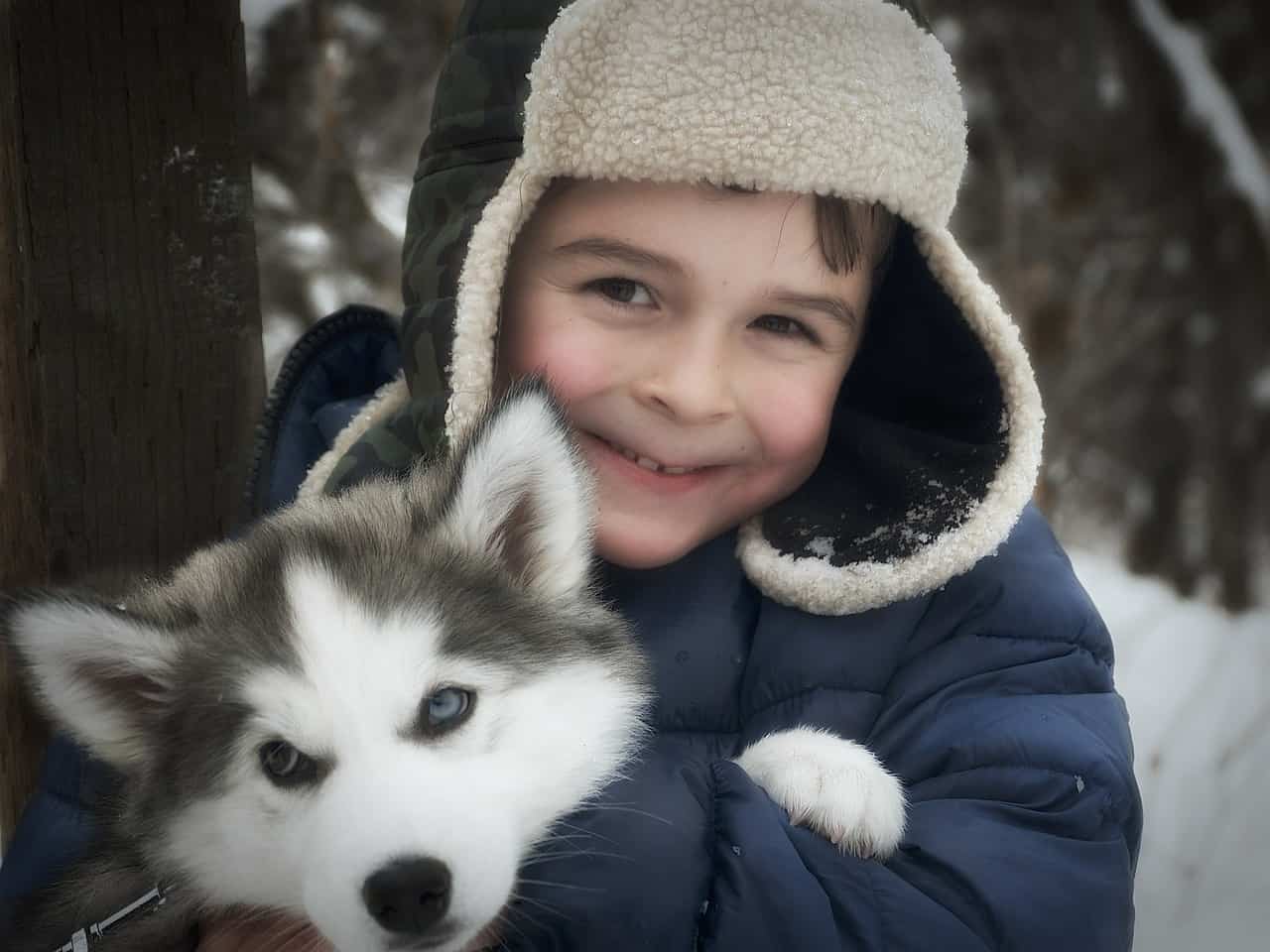
Their good-naturedness with strangers makes them a great companion and/or family dog.
Huskies are highly curious.
Their high intelligence makes these dogs constantly on the move and wanting to figure out how things work. They have more of a tendency to wander off and get lost forever, so it’s important to keep an eye on your Siberian huskies.
Huskies need a good amount of daily exercise.
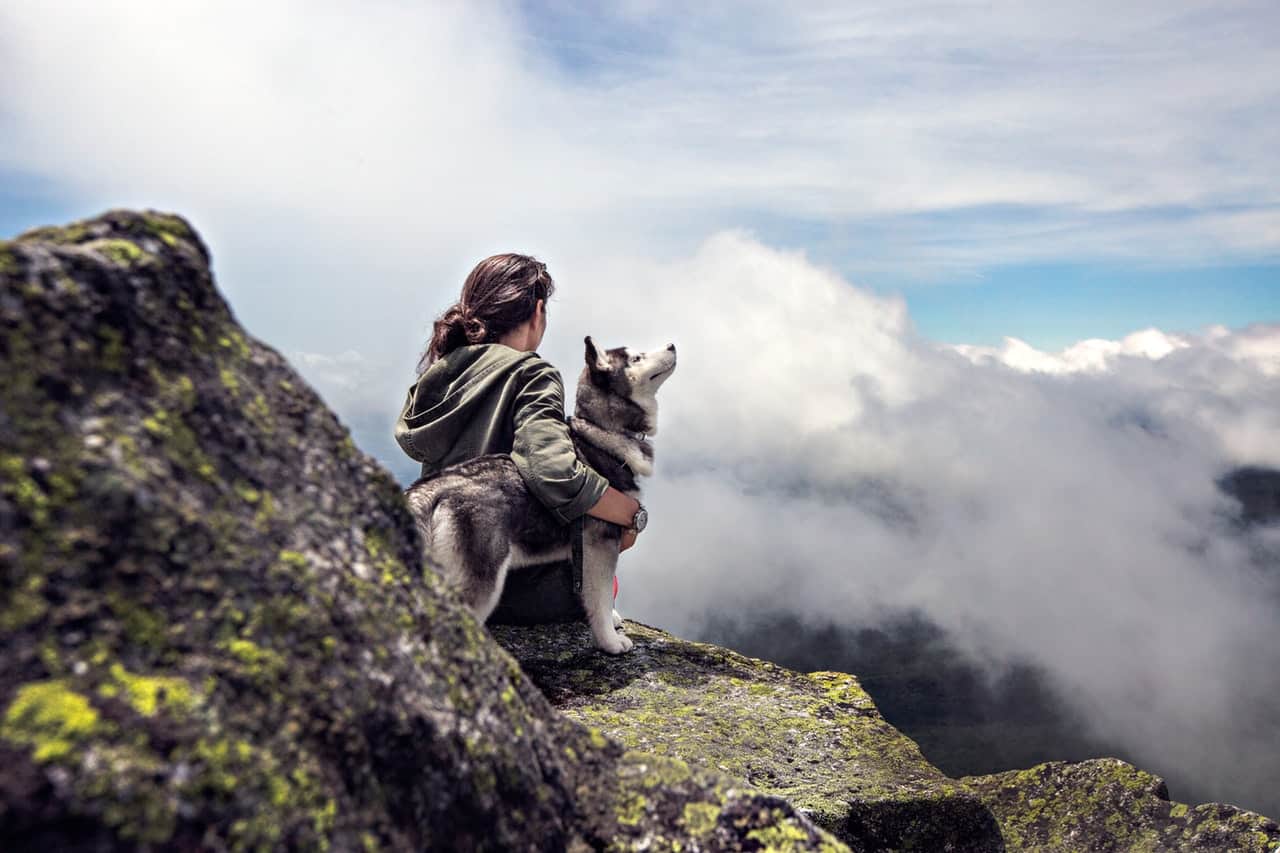
A long walk or daily jog is necessary to keep a husky from imploding from all their pent-up energy. Exercising won’t just keep you healthy, but it will keep your houses intact.
Early exposure is key.
It’s important to socialize your Huskies with people, other animals, and certain items and practices. This will keep them from reacting negatively in the future.
They’re prone to some health conditions.
Pure breeds are always vulnerable to certain conditions. For a Husky, they can have eye conditions, bone conditions, and gastrointestinal or lung complications.
Huskies need 1½-2 cups of high-quality dry food per day (two meals).
High-quality food is important to keep your dogs in top shape, and the same is true for Huskies. Make sure to note the food Huskies can’t eat, because these can cause serious problems for your dog upon consumption.
For their size, they don’t need to eat as much food.
Because the original sled dogs lived in the extreme conditions of the Arctic, huskies can live off of scarce resources. It is still important to feed them, of course, but they don’t have as big of an appetite as other breeds. However, if you think your husky is totally not eating, consider a trip to the vet at the soonest.
Huskies have a miniature version.
For those who want a Husky but think of size as a huge factor, a miniature husky might be more manageable for you – but only in size. They share the same personality as their bigger siblings.
Siberian Huskies used to be the “Arctic Husky.”
They were first acknowledged in 1938 as the Arctic Husky, which was eventually changed to Siberian Husky in 1991.
These dogs used to babysit small children of the Arctic tribes.
While some accompanied adults hunting in the Arctic, they leave some Huskies behind to look after Eskimos’ children back home.
Other names for the husky are Chukcha, Chuksha, Husky, and Icee.
These are other ways Arctic tribes refer to Huskies.
They were first brought to America in 1908.
Huskies were originally brought to America by William Goosak. They were contenders to the 1909 All Alaska Sweepstakes, a dog-sled race of 408 miles with a USD10,000 prize. Despite controversy for being smaller dogs than what was usually used, Goosak’s team placed third.
Goosak’s sledding team was only bribed into 3rd place.
Apparently, too many bets on Goosak would’ve literally broken the bank back then. This is why rumors flew that people rigged the competition to land him in third place (with his agreement).
Huskies have a great sense of smell.
As with most dogs, a husky’s sense of smell is better than a human’s. However, the husky’s origin as a hunting dog also adds to this exceptional quality. They can smell a trail left weeks ago with no difficulty.
A husky was the mascot for Project Iceworm.
In 1960, the US Army undertook a project to construct Camp Century, an underground facility for defense and space research in the Arctic. As part of Project Iceworm, it involved around 150 crew. A Siberian Husky named Mukluk was the unofficial face of this project.
Huskies need their teeth brushed two to three times a week.
This is to remove tartar and bacteria buildup. Even better, daily brushing prevents gum and mouth disease.
Owners should trim huskies' nails two to three times a month.
If you hear them clicking on the floor, that means they’re too long.
Dog nails have blood vessels in them - cutting them too far can cause bleeding.
Cutting your dogs’ nails too short is not just painful, but also traumatic for your dogs. This may be the reason why nail clippers may spook some dogs.
The husky’s ears need a weekly check for redness or foul odor.
These symptoms state an infection, so it’s important to look out for them. To clean your dog’s ears, wipe the outer ear out with a cotton ball damp with a pH-balanced ear solution. Never insert anything into the ear canal.
They can get lonely real quick.
These dogs constantly need the company of other dogs or humans.
People call dog sled drivers “mushers.”
These mushers rose to fame during the Serum Run of 1925 along with their lead dogs.
Huskies come in a wide range of colors and markings.
Some colorations in huskies may be abnormal. It could also cause complications, such as genetically-altered merle coloring.
The metaphor “three dog night” is from Huskies.
Three dog night is a Chukchi saying which literally means a night so cold you would need three dogs in bed for warmth.
Huskies can have dual-colored eyes.
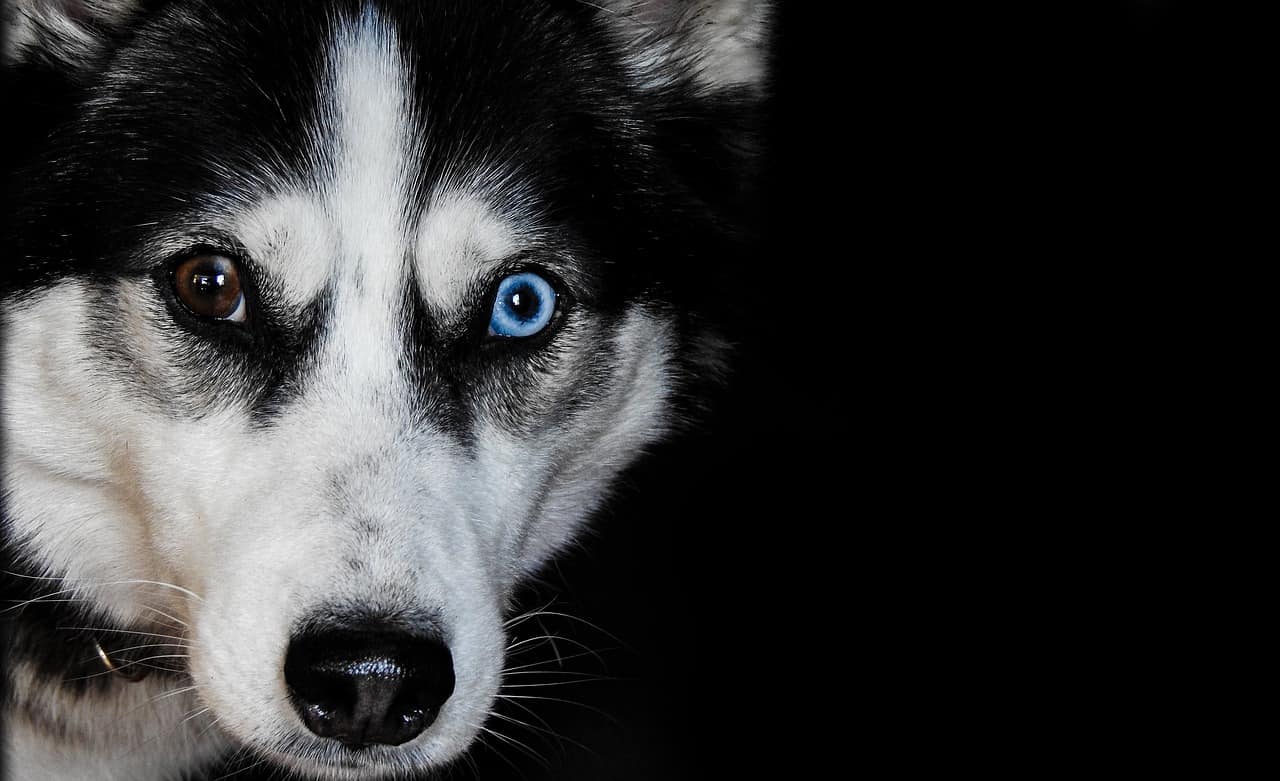
One of the more interesting Siberian husky facts: Husky eyes may be solid brown, blue or black. Particoloration (one color with hints of another color) and heterochromia (two different colors) are also observed in this breed.
Husky puppies should eat three times a day (or as recommended by your vet).
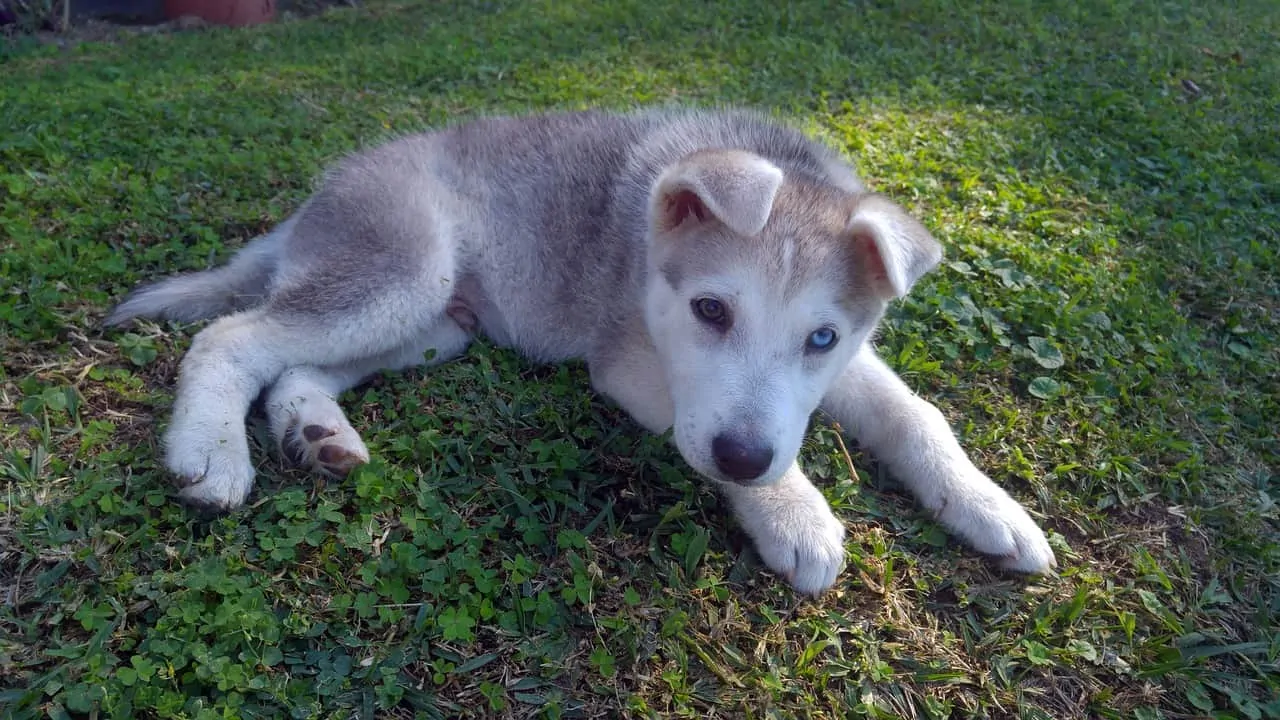
Siberian Husky pups generally eat more frequently than fully-grown ones.
They love to chew.
Though this is the case with most dogs, Huskies are especially curious and rambunctious. It is best to husky-proof your homes. This doesn’t just mean keeping precious items out of reach, but it’ll save your dog’s life if you organize your cables where they can’t use them as a chew toy.
Huskies have black to pure white shades on the with reds and coppers for markings.
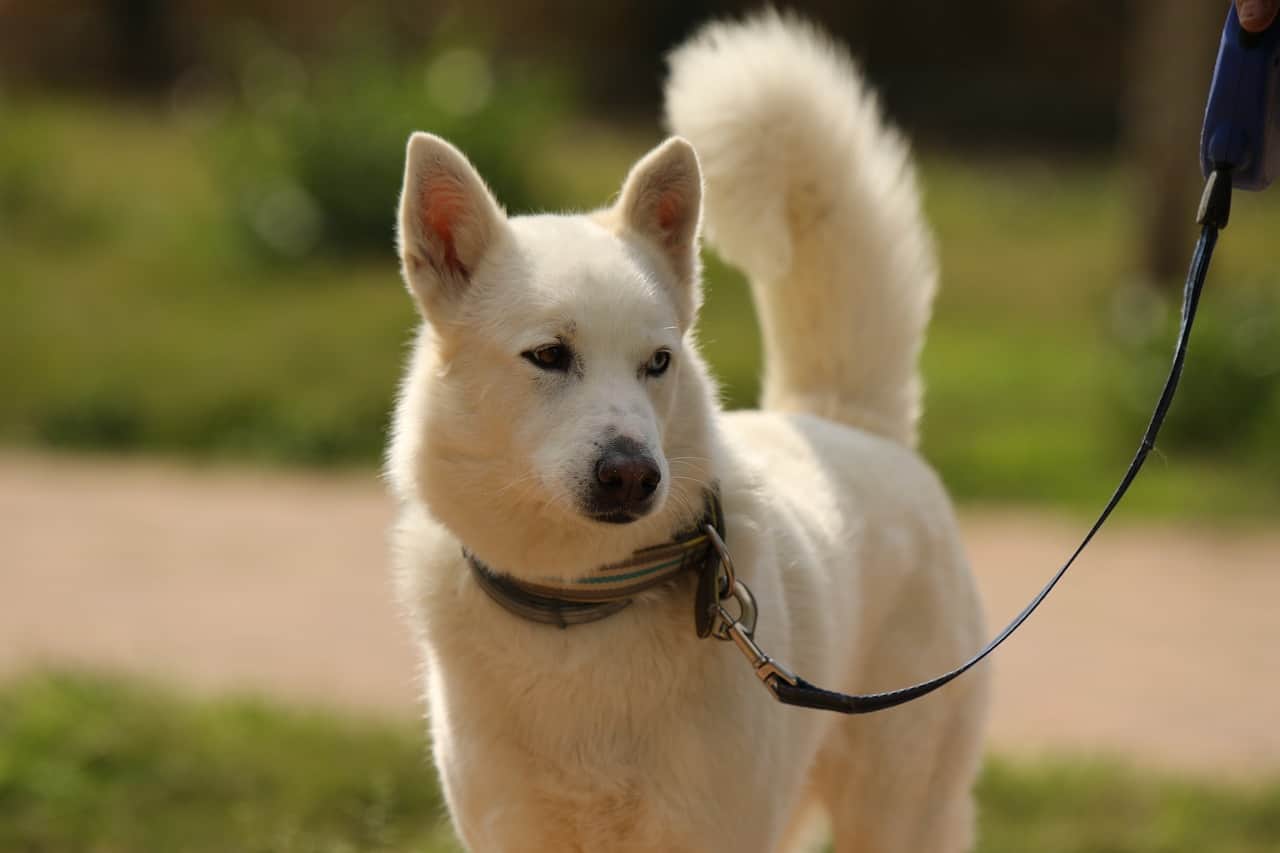
Pure white huskies are the most genetically rare out of all the color varieties.
Huskies are very picky eaters.
Partly because of their smaller appetites, huskies could be pretty selective when it comes to their meals. Choosing the right meal for your husky could take a lot of trial-and-error.
An active 50-pound husky should intake about 1358 calories a day.
A lot of external and internal factors may influence the recommended daily intake for these dogs. However, the National Research Council of the National Academies proposes this average for your Husky’s diet.
The Siberian Husky, Samoyed, and Alaskan Malamute are all descended from the original sled dog.
These husky breeds are all siblings of the original sled dog bred by the aboriginal people of the Arctic.
Siberian huskies are the closest to the original Chukchi dogs.
Although people link these dogs to many breeds, the Siberian husky is the closest to their predecessors.
Siberian huskies have distinct blue eyes.
This dog’s distinctive trait is its commonly blue eyes, which is a rarity in dogs. They are the only dogs known to have blue eyes without the Merle gene.
Siberian Huskies have a specific gene that causes a loss of pigmentation.
This gene affects their irises but not their coat, which is why Huskies are most commonly seen with blue eyes and a black and white coat.
Canada had the first registered Siberian Huskies.
The breed was first registered in Canada in 1938.
People say a Husky's saliva is good for humans.
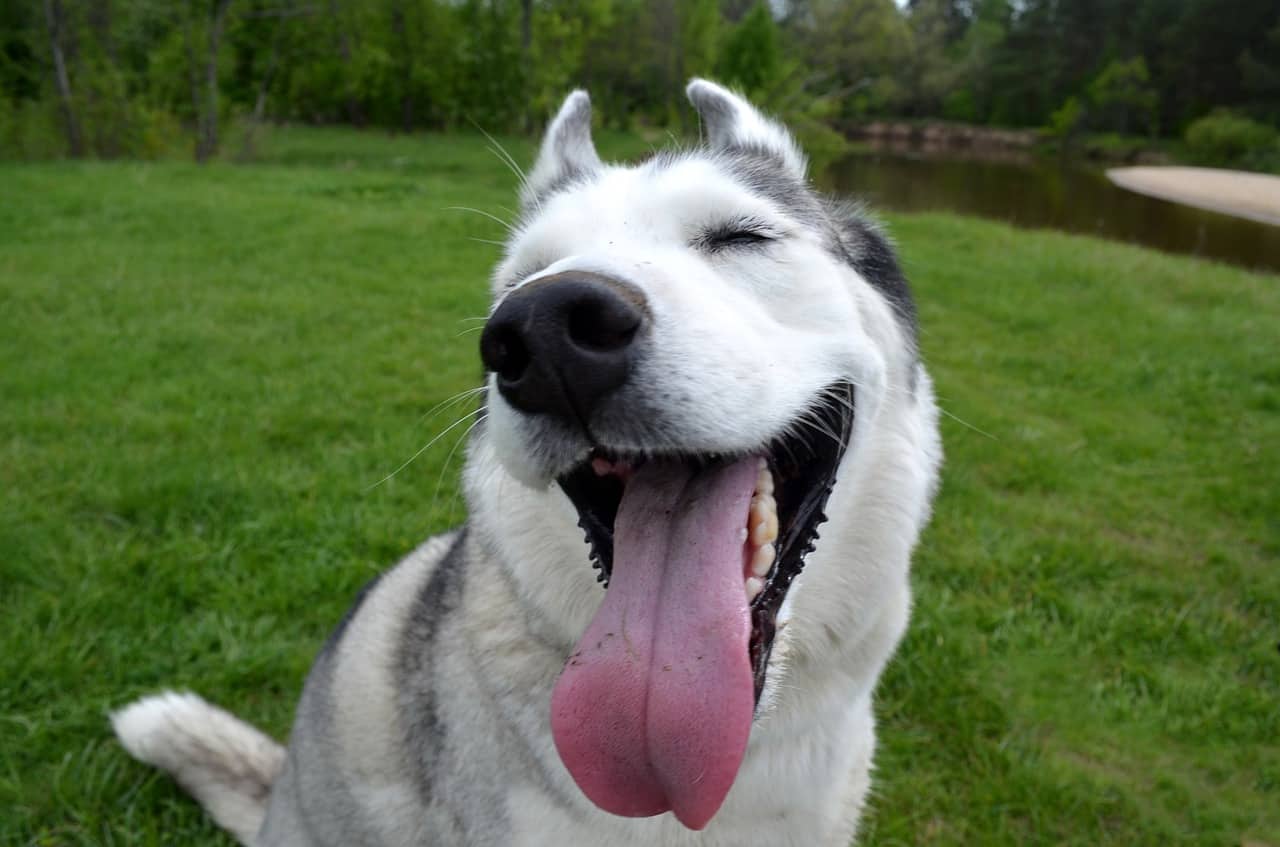
They are close in genetics to grey wolves. Grey wolves have saliva that has proven to heal wounds and aid in cell regeneration. Hence, Husky saliva contains probiotics that are good for humans.
Siberian Huskies need leash training.
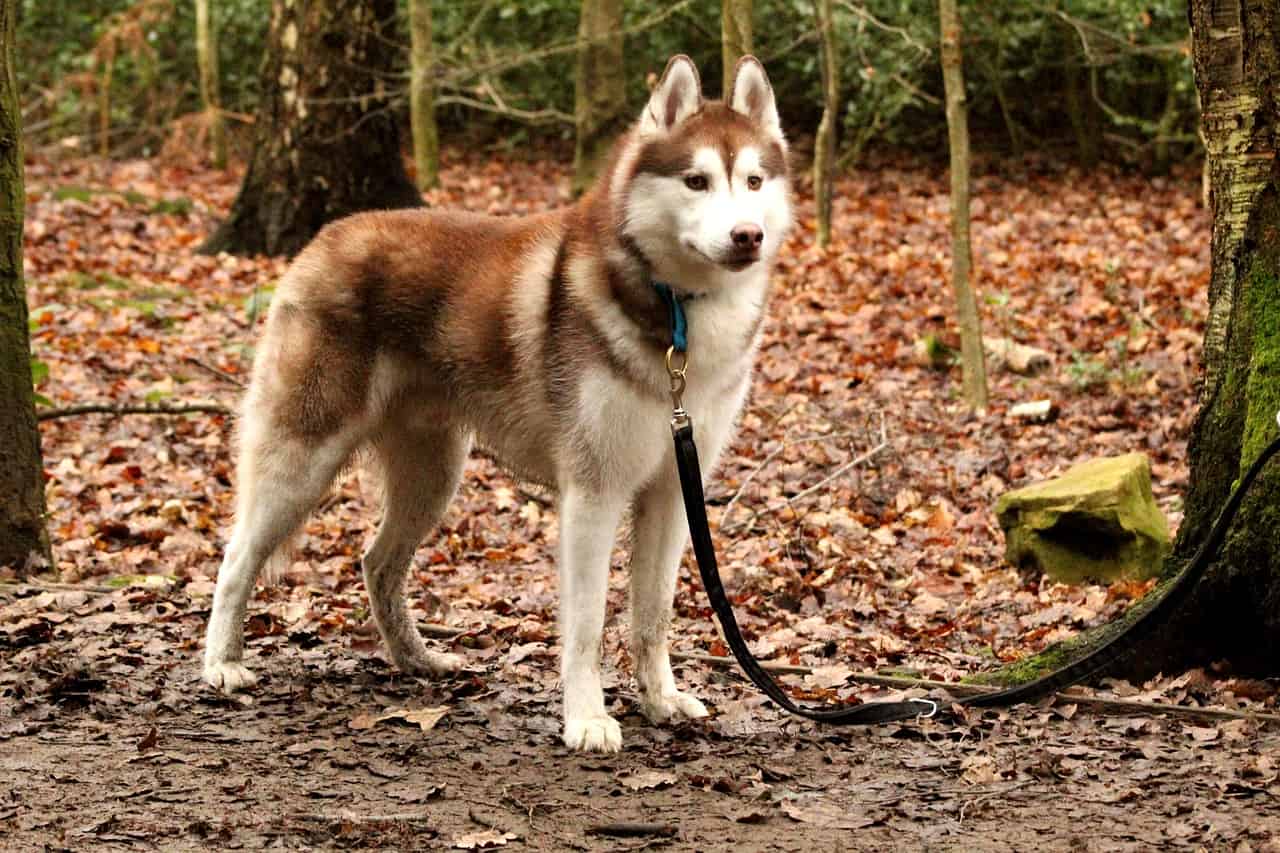
Since huskies have been tugging and pulling on leashes, it is advisable to employ a trainer to acclimate your dog to leashes from an early age.
They make great companion dogs.
Aside from being smart, huskies are also highly sensitive to emotions and moods. They can detect whether their owners are sad and have shown to respond when a person is in tears.
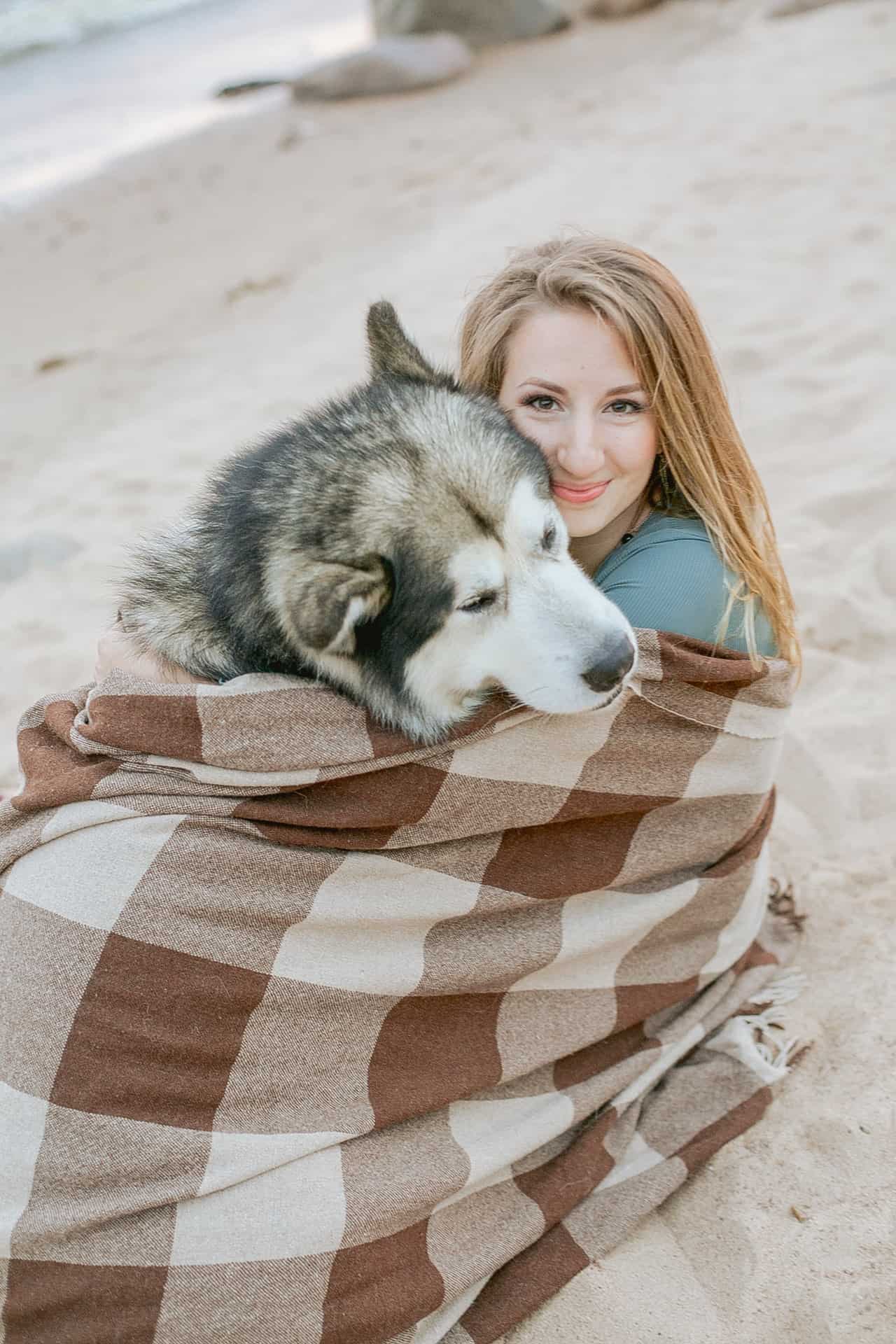
They like to dig deep.
Aside from being independent thinkers, this breed digs and lies around in the ground. This may be an instinct from being Arctic dogs, or simply a way to keep cool in the heat.
Siberian huskies have a genetic trait called snow nose.
Snow nose refers to the phenomena where huskies’ noses turn pink. It usually occurs in a colder climate and disappears in the summer.
Their whiskers enable heightened senses.
The official name for Husky whiskers is vibrissae. They aid in navigating in sensory-affecting conditions such as the dark and detect the slightest changes in the wind and motion.
Their whiskers are near their nose and under their jaws.
These hairs are very sensitive, so it’s best to avoid these areas to avoid harming your dog.
Husky eyes have extra eyelids.
This extra nictitating membrane protects Huskies’ eyes against the elements.
They have night vision.
The tapetum lucidum (“bright tapestry” in Greek) enables Huskies to see in the dark. This is the same membrane covering wolves’ eyes.
Huskies have four times more taste buds than cats.
Huskies have a slightly heightened sense of taste compared to cats. However…
Humans have nine times more taste buds than huskies.
Huskies hold a candle to us in terms of our palates. Their significantly fewer taste buds cause them to have a narrower palate and make them try anything.
Huskies are not colorblind.
Like all dogs, huskies will have trouble distinguishing between reds and greens. However, it doesn’t mean that they won’t see the objects themselves or other elements in their surroundings.
They dream, too.
Like humans, dogs also experience rapid eye movement (REM) sleep and may even kick or whine in their sleep.
If trained, a dog can identify one teaspoon of sugar from 2 million gallons (two Olympic-sized pools) of water.
Dogs possess 300 million olfactory cells (smell receptors) in their heads, compared to 6 million in humans.
Huskies don’t have appendices.
These hyperactive dogs lack the unnecessary organ that can be fatal to humans.
Don't shave Huskies unless for medical purposes.
Instead, it is advisable to just trim the hair between their paws.
Overfeeding a husky may cause joint problems.
Hip dysplasia and other joint-related issues are inevitable if you keep overfeeding your husky.
Their resting heart rate (RHR) ranges between 60-100bpm.
This could be lower or higher than your RHR, depending on your metabolism.
They can bear offspring twice a year.
Female huskies can reproduce twice per year.
They have 18 muscles in their ears.
Their distinctly erect ears can detect sound up to 10 miles away.
In the classic novel, White Fang, the protagonist is ¼ Siberian Husky.
The main character of Jack London’s classic is a wolfdog.
Huskies can be cross-bred with wolves.
Since people discovered that dogs and wolves can bear offspring, huskies have been one of the top choices for a wolfdog hybrid.
Some universities have the Husky as their mascot.
Namely: Northeastern University, Houston Baptist University and the University of Washington.
Like other dogs, Huskies prefer excreting with their bodies aligned along the north-south axis.
Based on studies conducted in a magnetically balanced location, dogs use Earth’s magnetic fields to align their bowel and bladder movements. In pooping, they avoided the East-West axis altogether.
Was this page helpful?
Our commitment to delivering trustworthy and engaging content is at the heart of what we do. Each fact on our site is contributed by real users like you, bringing a wealth of diverse insights and information. To ensure the highest standards of accuracy and reliability, our dedicated editors meticulously review each submission. This process guarantees that the facts we share are not only fascinating but also credible. Trust in our commitment to quality and authenticity as you explore and learn with us.
